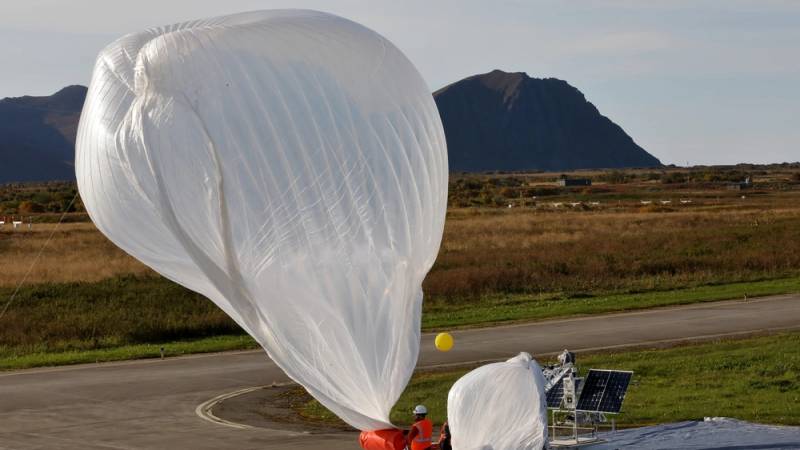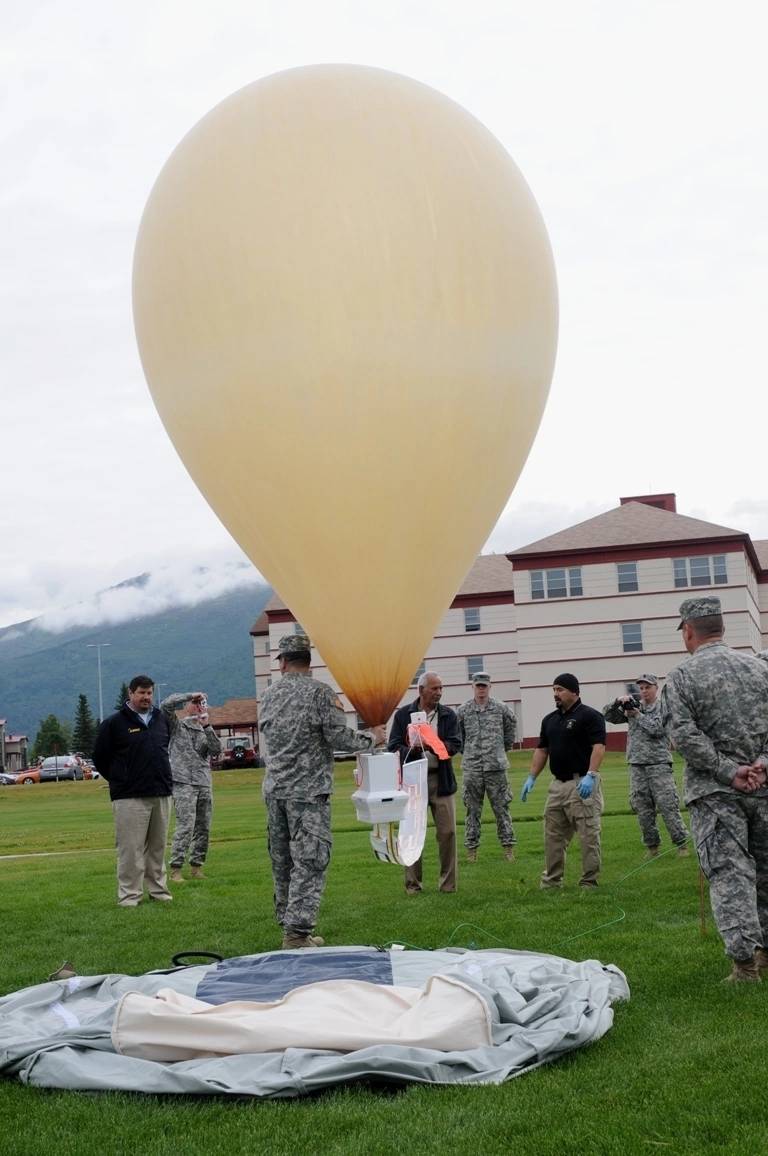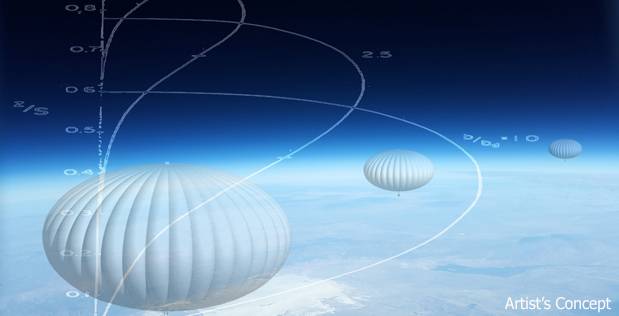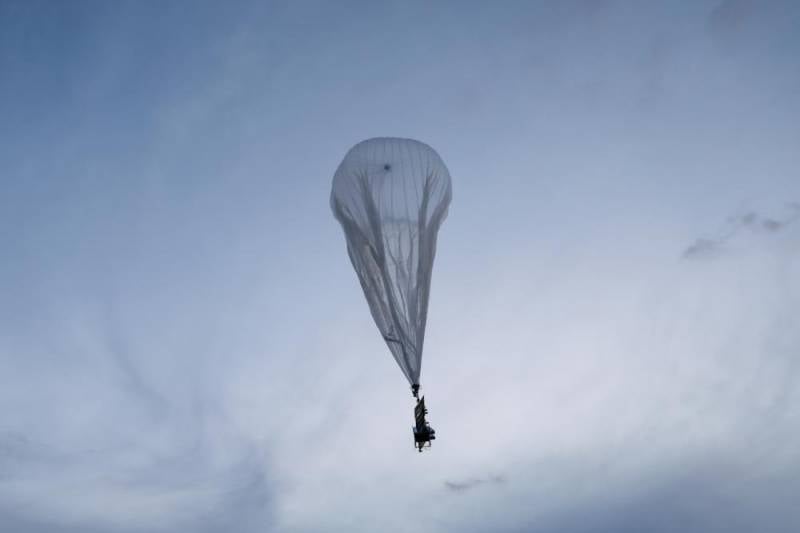New technologies and opportunities. Developments of the Pentagon in the field of stratospheric balloons

Launch of a serial stratospheric balloon manufactured by Raven Aerostar
The US military has a variety of operational-strategic level reconnaissance and target designation tools, such as spacecraft or UAVs. Several years ago, the Pentagon decided to strengthen this intelligence system with new means on stratospheric platforms. Tests have already shown that modern technology makes it possible to create a stratospheric balloon with enhanced functions and improved reconnaissance capabilities. It can be assumed that after the recent incident with the Chinese weather balloon, work in this direction will receive a new impetus.
Reasons for interest
The Pentagon and other organizations, both government and commercial, have long shown interest in stratospheric platforms to accommodate various equipment. The reasons for this interest are simple and understandable: stratospheric balloons have a number of characteristic features that give them advantages over vehicles of other classes. At the same time, there are also disadvantages, which, however, can be overcome.
The main advantages of stratostats are related to flight altitudes. They are capable of flying higher than planes or UAVs, making them extremely difficult targets for anti-aircraft systems - both to detect and to destroy. At the same time, they fly much lower than the satellites, which makes it possible to reduce the distance to the reconnaissance object and improve the quality of the information collected.
With all this, the stratospheric platform is much simpler and cheaper. aviation or orbital, both in production and in operation. In particular, this makes it possible to create and launch large reconnaissance groups and monitor large areas.

Preparations for the launch of a small stratospheric skysat
At the same time, the stratostat has disadvantages. The main one is the lack of the ability to actively fly and maneuver. The direction of flight of such an apparatus is determined only by external factors in the form of air currents. In addition, the creation of lift due to light gas imposes restrictions on the carrying capacity and, accordingly, the composition of the equipment. An increase in these parameters is associated with the use of larger cylinders, which is not always possible and appropriate.
Technological base
Thus, the stratospheric balloon can be a convenient tool for solving individual problems, but full use of its potential requires certain new developments or technologies. The Pentagon represented by the DARPA agency and other organizations, as well as commercial contractors, are already looking for the necessary solutions and even show interesting results.
First of all, it is proposed to improve stratospheric balloons through the introduction of new materials and designs. So, different versions of cylinders are offered from various materials with favorable ratios of volume, weight, strength and achievable load capacity. Also, automatic pressure maintenance systems in flight or in emergency situations are being developed and improved.
Within the framework of several projects at once, the optimal shape of the gondola for the payload is being worked out. This product should be light, strong and voluminous - to accommodate all the required equipment. In addition, opportunities are being explored to reduce radar visibility, which will make the stratostat an even more difficult target for air defense. Stealth technologies are primarily used in projects for the Pentagon.

Demonstration of the principles of the ALTA system
Control systems
The direction and speed of the stratospheric flight are determined by air currents, but this does not exclude the possibility of flying along a given route. To do this, the aircraft must change altitude, moving from one current to another, moving in the right direction. This does not allow for vigorous maneuvers, but significantly expands operational capabilities. Such a maneuver can be provided in different ways.
An interesting solution was developed as part of the DAPRA ALTA (Adaptable Lighter Than Air) program and then implemented by Alphabet in the Loon project. In this case, the operation of the stratospheric balloon is provided by a ground monitoring and control station. The station must collect available information about weather conditions in the area of operation of the stratospheric balloon and search for air currents. If it is necessary to change the direction of movement, it gives the aircraft a command to take a certain height and get into the desired flow.
This operating principle has been implemented and tested in practice. So, in the middle of the decade, Loon products were tested, and in 2017 they were involved in a real rescue operation in Puerto Rico. They were located over the disaster area and provided constant communication.
A more complex and efficient technology is being developed by World View Enterprises based on NASA experience. Her device Strat-OAWL (Stratospheric Optical Autocovariance Wind Lidar) is mounted on a stratostat and uses laser and optics to track the movement of air masses. Accordingly, the aircraft independently studies the weather conditions and finds the air currents it needs. Since 2019, the Strat-OAWL has been regularly tested in various areas.
Intelligence tasks
According to known data, by the end of the tenth years, DARPA and contractors had carried out all the planned research and created the required technologies. This allowed them to move on to the stage of developing a promising stratospheric balloon for use in reconnaissance. This program was designated COLD STAR (Covert Long-Dwell Stratospheric Architecture). No later than 2020-21 this project has reached flight testing, and such activities will continue.

According to known data, this project provides for the construction of a stratospheric balloon of a classical design with some characteristic features. So, to reduce visibility, an elliptical gondola is used. On board is a set of batteries and solar panels to recharge them. A developed autopilot with artificial intelligence is also being developed, capable of controlling the aircraft and its payload.
COLD STAR is considered as a multi-purpose platform, but it is reported that the main payload for it will be reconnaissance equipment - optical, infrared, radar or radio engineering. According to some estimates, such devices will be able to take pictures of the terrain or work as a means of warning of a missile attack. In particular, numerous stratospheric balloons are proposed to be used to track the hypersonic weapons of potential adversaries.
The TRIPPWIRE (Tactical Responsive ISR Platforms and Payloads Watching Isolated Remote Environments) project is also being developed for the Pentagon. This stratospheric balloon is not fundamentally different from COLD STAR and should be based on the same technologies. At the same time, it is known that within the framework of this project, fire weapons will be created and tested to combat other people's stratospheric balloons. How exactly it is proposed to hit them has not yet been reported.
Some samples of stratospheric platforms, such as COLD STAR, have reached the test and trial operation in the armed forces. It can be expected that the Pentagon organizations and their contractors are already engaged in the next generation of modern stratospheric balloons. Or, at least, they are working out ways to develop this area and are looking for the necessary technologies.
Stratospheric Threat
Stratospheric platforms, with all the limitations, have a number of characteristic advantages of various kinds. The use of modern technologies and components makes it possible to more fully realize the potential of such equipment - and make it more interesting in terms of practical application, incl. in the military field.

Part of the capabilities and potential of such platforms was recently shown by the incident with a Chinese stratosphere balloon in the sky over the United States. The device flew across the entire territory of the country and had the theoretical possibility of shooting a wide strip of terrain, including several strategically important objects. At the same time, the stratostat could not be shot down until it dropped to an accessible height. These events have shown that the stratostat is a difficult target even for a modern advanced air defense system with all the necessary components.
The recent negative American experience and information about the Pentagon's promising projects lead to obvious conclusions. The United States understands the capabilities and value of stratospheric balloons and intends to use such equipment in the future. Accordingly, Washington's competitors and rivals should consider the future emergence of a new threat and take the necessary measures.
It is necessary to improve radar and other systems for timely detection of stratospheric targets. There are also increased requirements for firepower. How exactly these tasks will be solved by different countries is not yet clear. However, it cannot be ruled out that the world leaders in the field of air defense and missile defense, for example Russia, already have all the necessary competencies, technologies, or even real capabilities.
Past and Future
In the past, the Pentagon and the CIA actively used reconnaissance stratospheric balloons and launched them en masse towards a potential enemy, but the effectiveness of such reconnaissance turned out to be low. Then a more convenient and useful alternative appeared in the form of spacecraft. For many years, satellite intelligence has taken a leading place.
Many years later, stratospheric balloons were able to return to the field of intelligence. New technologies and components allow them to acquire previously missing capabilities and dramatically increase efficiency. The fundamental possibility of obtaining such results has already been confirmed by practice, and now projects of equipment for full-fledged operation are being developed. Whether these aircraft will cope with all the assigned tasks and whether they will be able to win back the previously lost place from the satellites will become known in the future.
Information